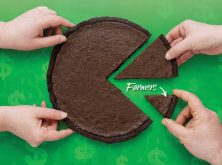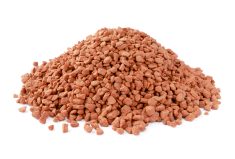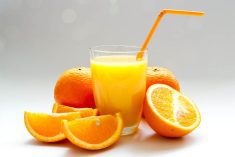How do you know when you’ve over-diversified the farm?
The question came up during the Direct Marketing Conference, held virtually February 3-5 during a panel on diversification led by three farming women.
Lourdes Still farms flowers she turns into dye for lavish wearable art and experiential tourism. Anna Hunter raises sheep, mills wool, and teaches wool and dyeing skills. Kris Antonius raises medicinal herbs, co-runs a DIY festival, hosts workshops, and maintains a campground and event ground.
“That may be the hardest challenge,” said Hunter who said she has a propensity toward big ideas and needs the people around her to keep her focused and warn her when she’s getting burnt out.
Read Also

Journal pulls long-cited glyphosate study for ethics violations
The journal Regulatory Toxicology and Pharmacology has retracted a 2000 Monsanto-linked glyphosate review, drawing new scrutiny as Bayer faces mounting legal pressure.
It comes down to honing in on ‘why,’ Still and Antonius agreed.
“Why are we doing this again?” Still asked.
Quality of life
Keynote speaker Shannon Hayes addressed just that.
Hayes helms Sap Bush Hollow, a three-generation, diversified farm in New York state with pastured livestock, vacation rentals on site, and a farm-to-table café. Besides being CEO of the family enterprise, Hayes is a chef, writer and podcaster. She’s the author of Redefining Rich and six other books.
Farmers can’t simply diversify by moving from one gruelling enterprise to the next, she said. What if someone gets hurt, or someone in the family requires daily care? What about the good things that keep you going during bad times?
For her farm, decisions pass through the filter of a ‘quality- of-life’ statement, a motto that over time has got boiled down to one sentence so kids and farm employees can remember it.
“At Sap Bush Hollow Farm, we aim to nourish and restore family, community and planet while honouring body, mind and spirit,” Hayes said.
The statement encompasses what they want to spend time doing, what they want to do as a family, and what they want days to be or to feel like, Hayes said. This means taking time for passions that make people who they are.
For herself, this means making space for cooking good food. For others in her family, it means fashion, music, biology (a.k.a. livestock poop samples), dogs and ducks.
Diverse income streams
With that quality-of-life statement in mind, Hayes said, she recommends choosing three out of four possible streams of income:
- Self-employment. Hayes said even if this stream doesn’t make much money, it often confers a tax advantage that makes it worthwhile.
- Meaningful employment. This is a job you feel good about doing, Hayes said.
- Non-monetary income. Hayes described this as “quality-of- life” stuff, along with products her family gets from the farm (food, for instance).
- Passive income. This is income that doesn’t come from back-breaking work, Hayes said. For them this includes vacation rentals and co-marketing in their farm store (selling others’ products with a markup).
Approach the work with “militant organization,” Hayes said. For them, this means written protocols that make it easier for employees and kids to help. She makes a list of tasks for the week which slots in time for quality of life, like making time for music. The list helps visualize how to move things around as the week evolves.
Finally, Hayes said farmers need to invoke a “magical spell” when things spin out of control.
“No.”
Hayes said she’s taught her kids how to say no without offending people through a formula of “yes, no, yes.”
First, saying yes to what is important to you (why you say no). Second, saying no to what’s asked of you. Lastly, saying yes to what you can, and to honour the efforts of the asker, i.e. ‘I appreciate your effort’ and ‘here’s what I can offer.’
Local farmers’ lessons
Still, Hunter and Antonius offered their own suggestions for managing the demands of diversifying.
Hunter said she ‘stacks’ products, or finds ways to use what’s already there to diversify. This included using ‘offcuts’ of wool from her mill to assemble natural dye kits, and using her myriad agricultural photos to put together a calendar.
Still described paring off tasks she didn’t enjoy. For instance, she stopped arranging and selling flowers for weddings. She shut down her flower CSA subscription because the planning required for creative weekly bouquets was too much.
Antonius said she and her family discovered producing a podcast and magazine were too much.
As their farms all host visitors, the women said they also set clear boundaries — e.g. signage — to keep private space private and keep their families comfortable.
















